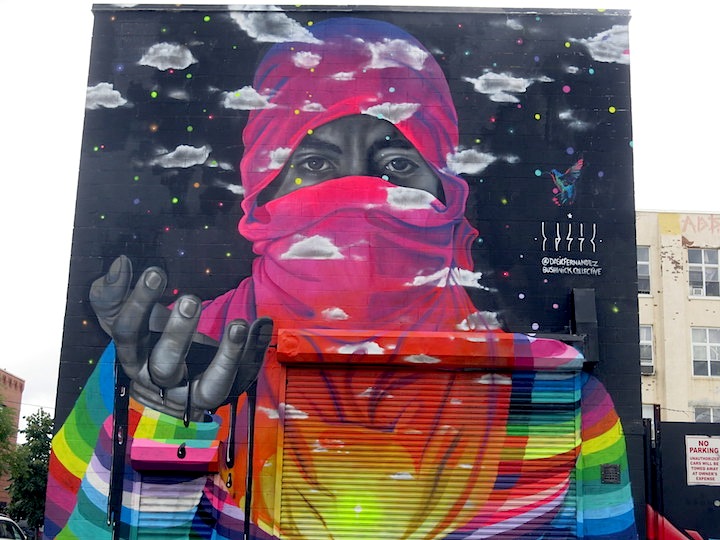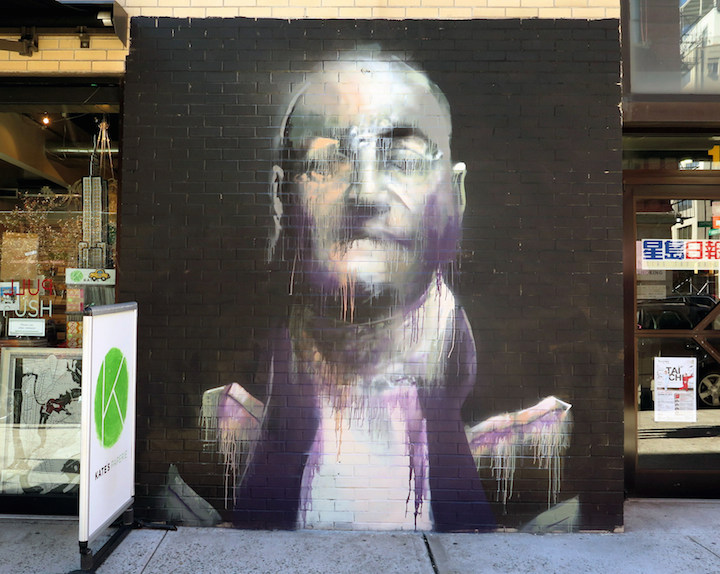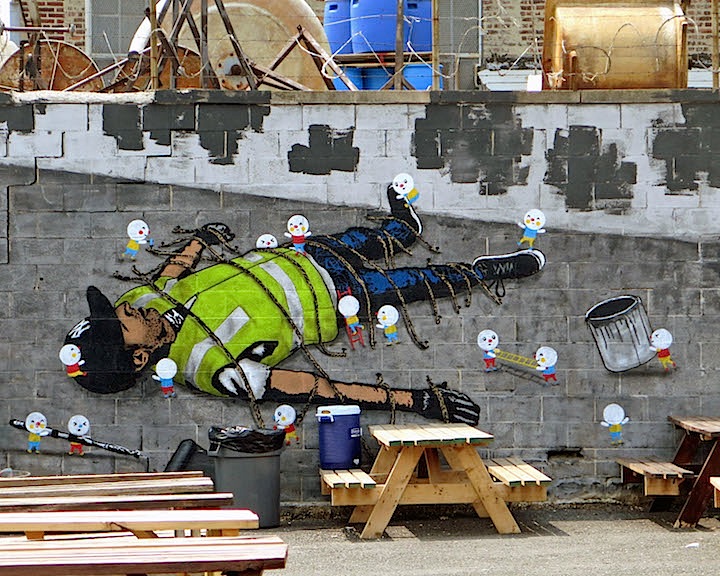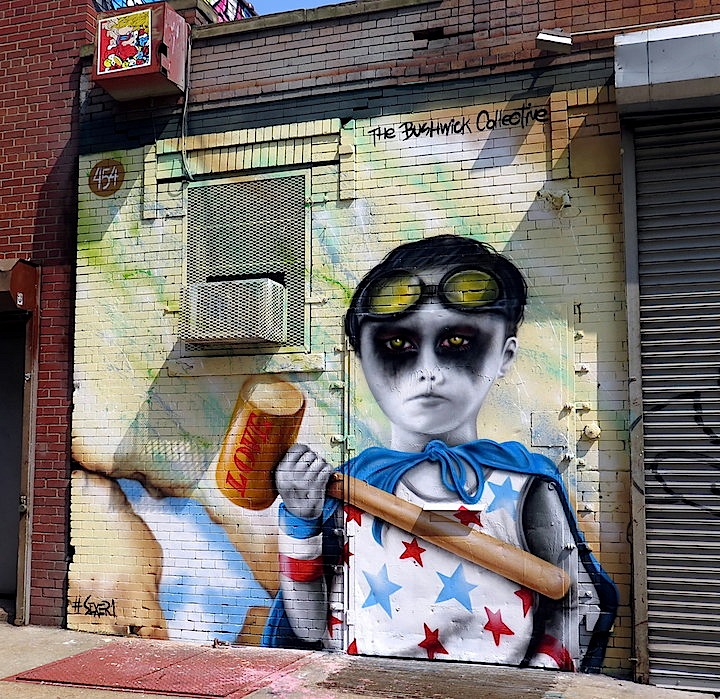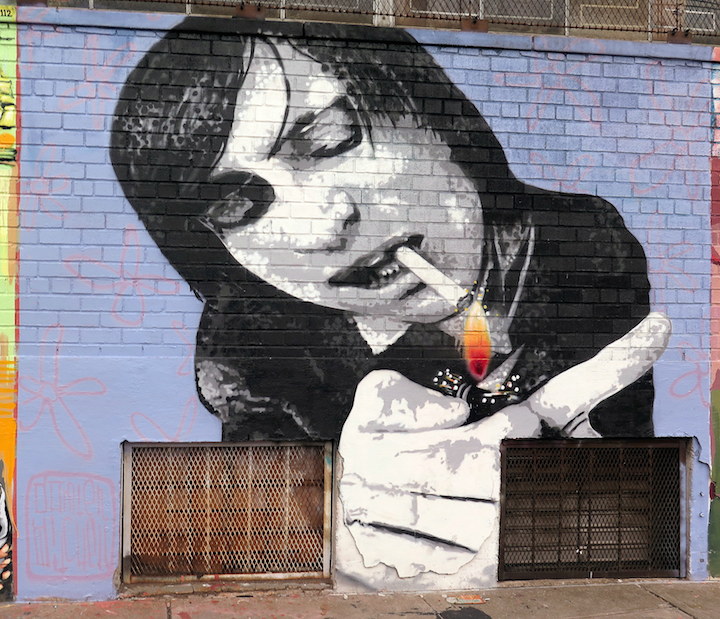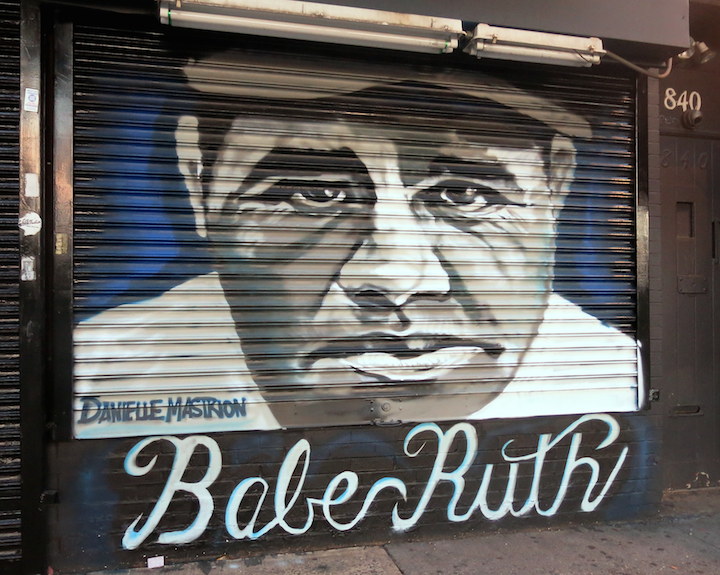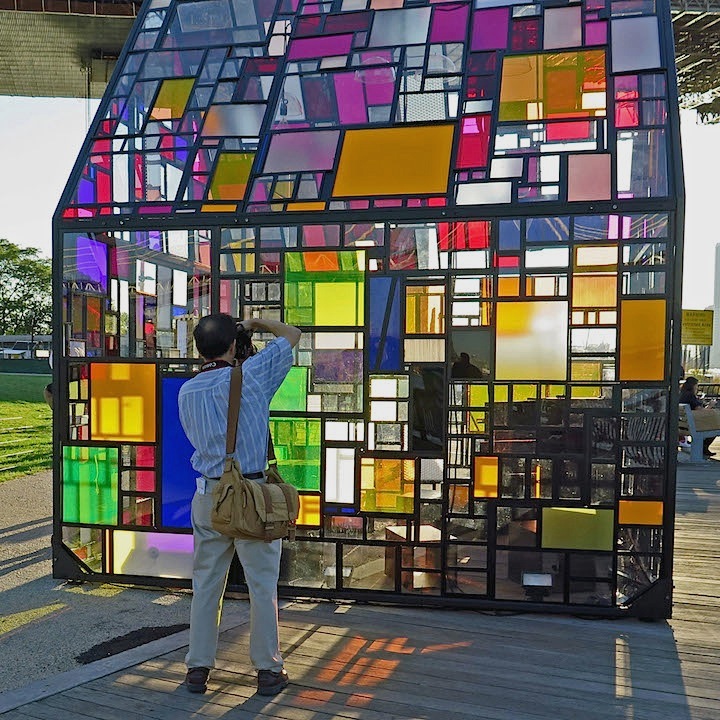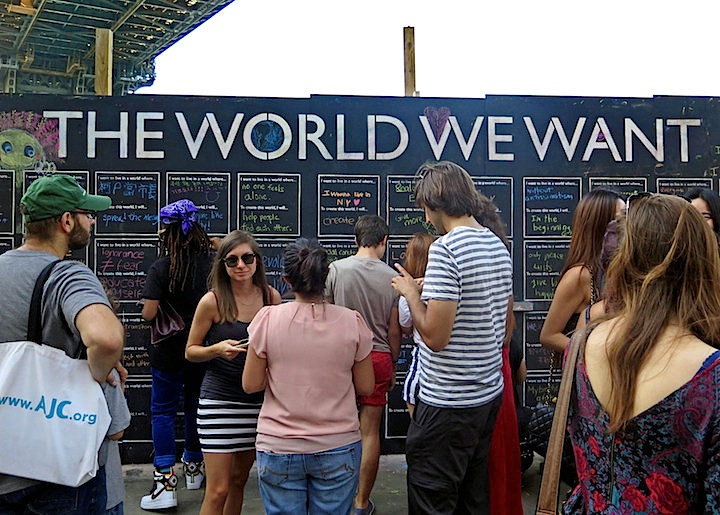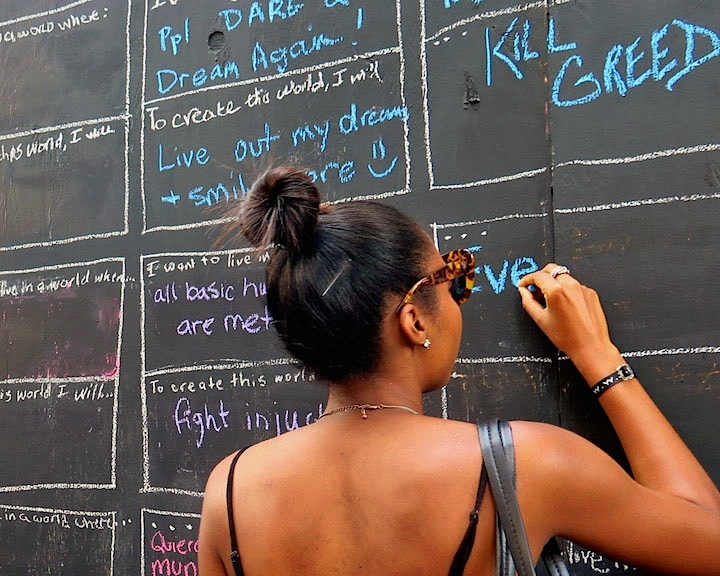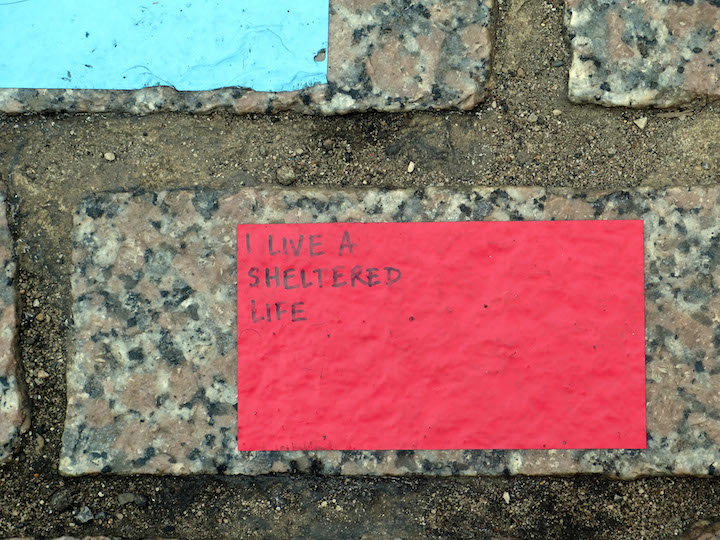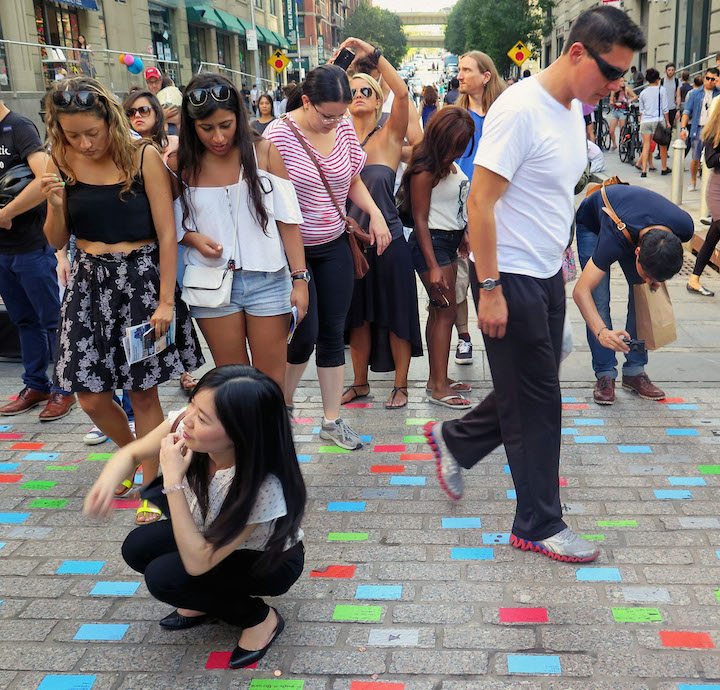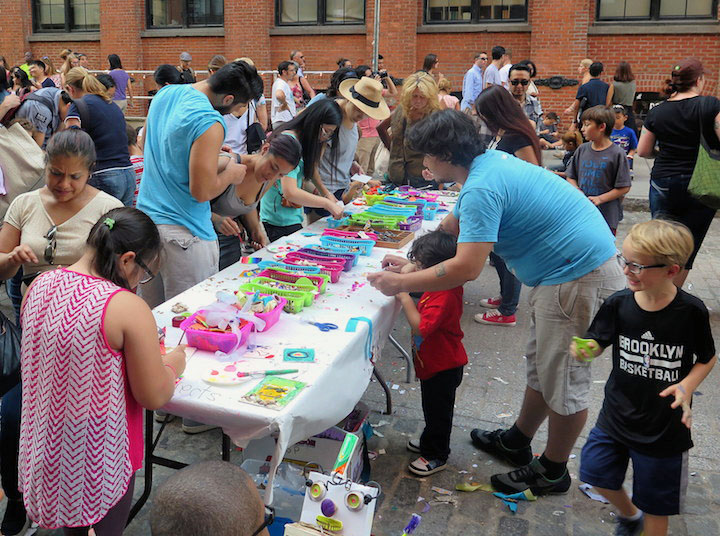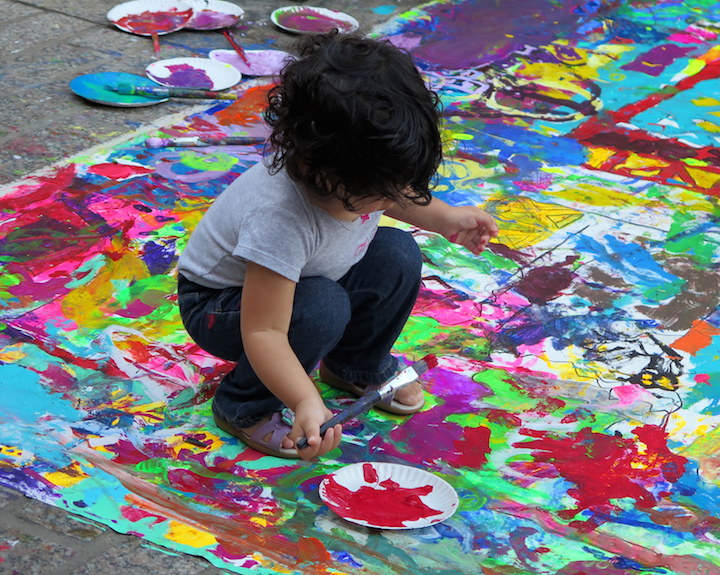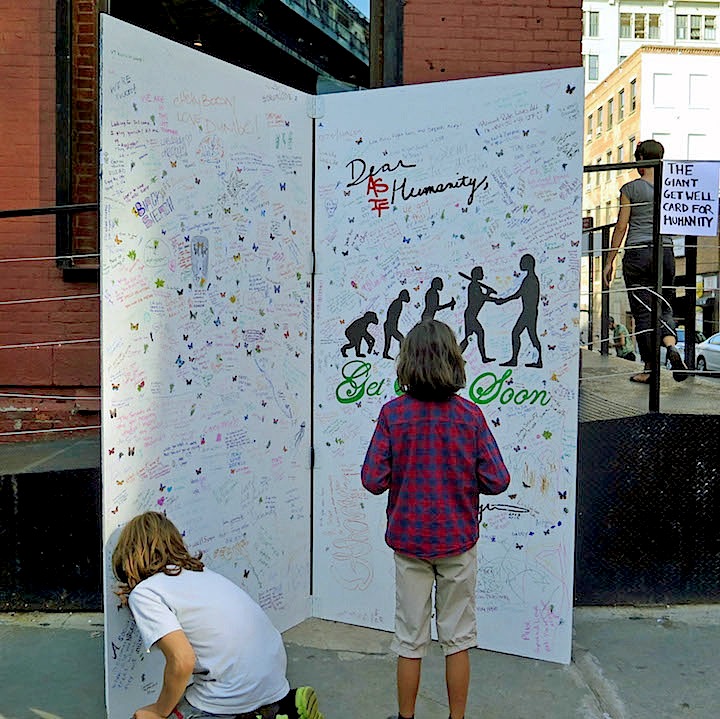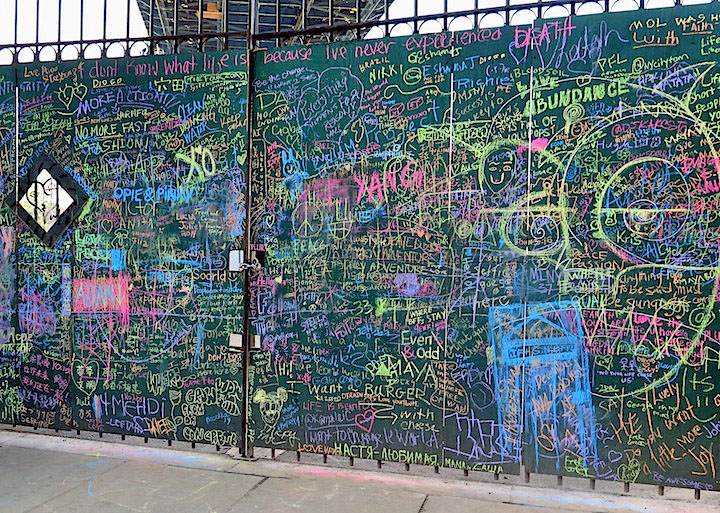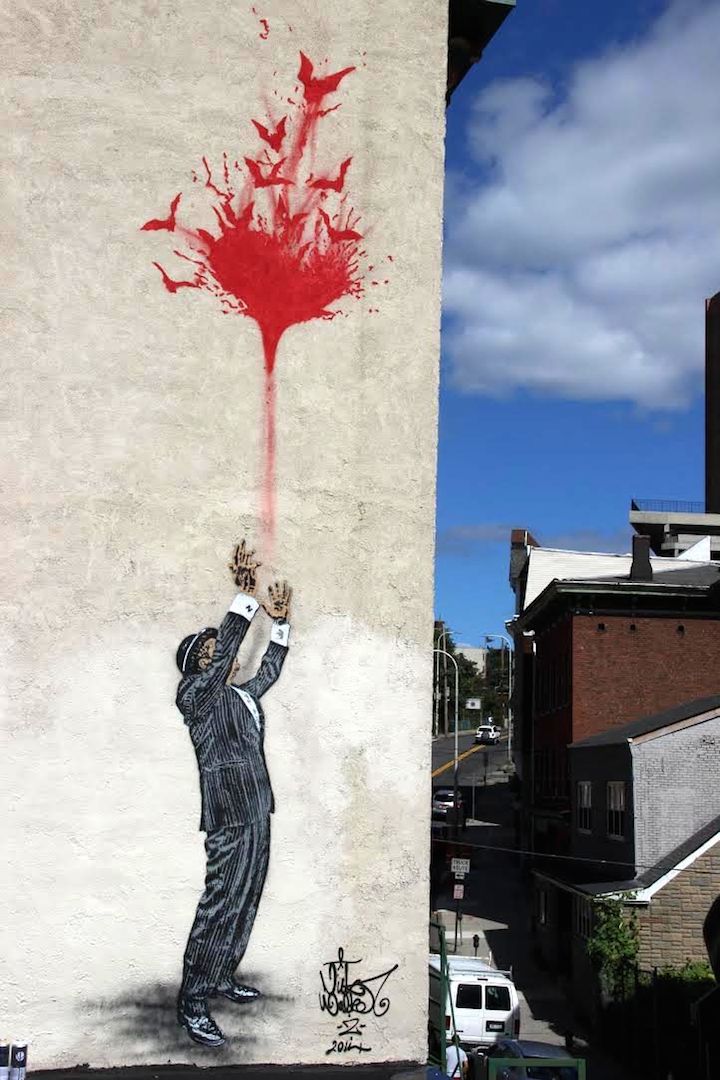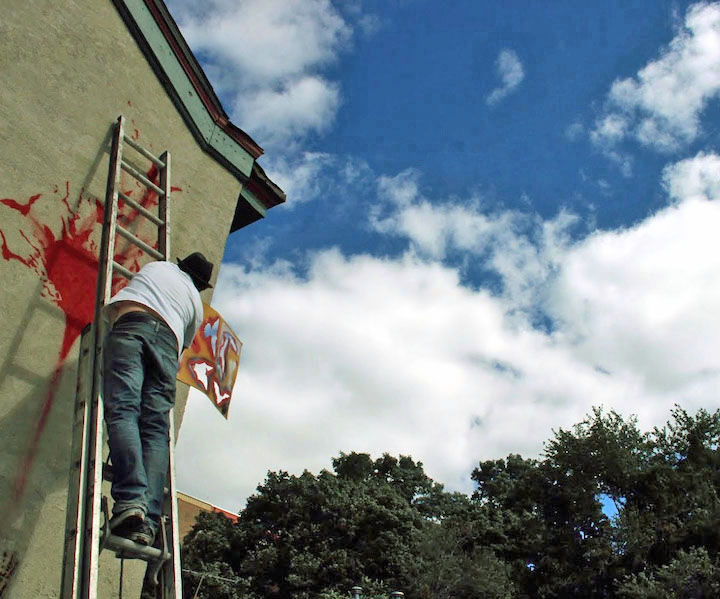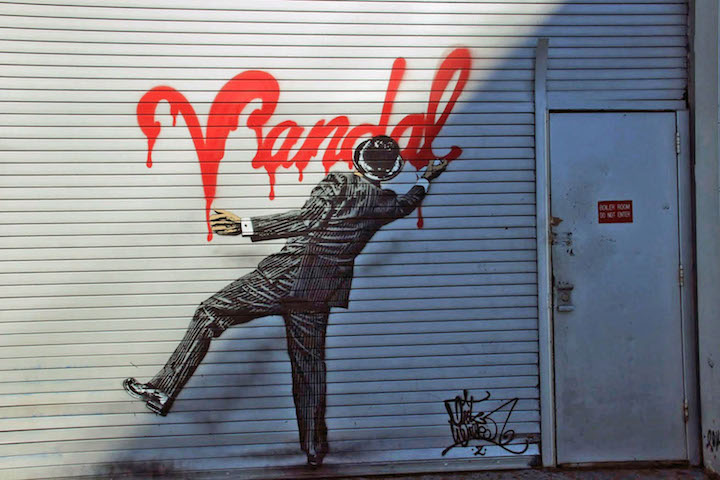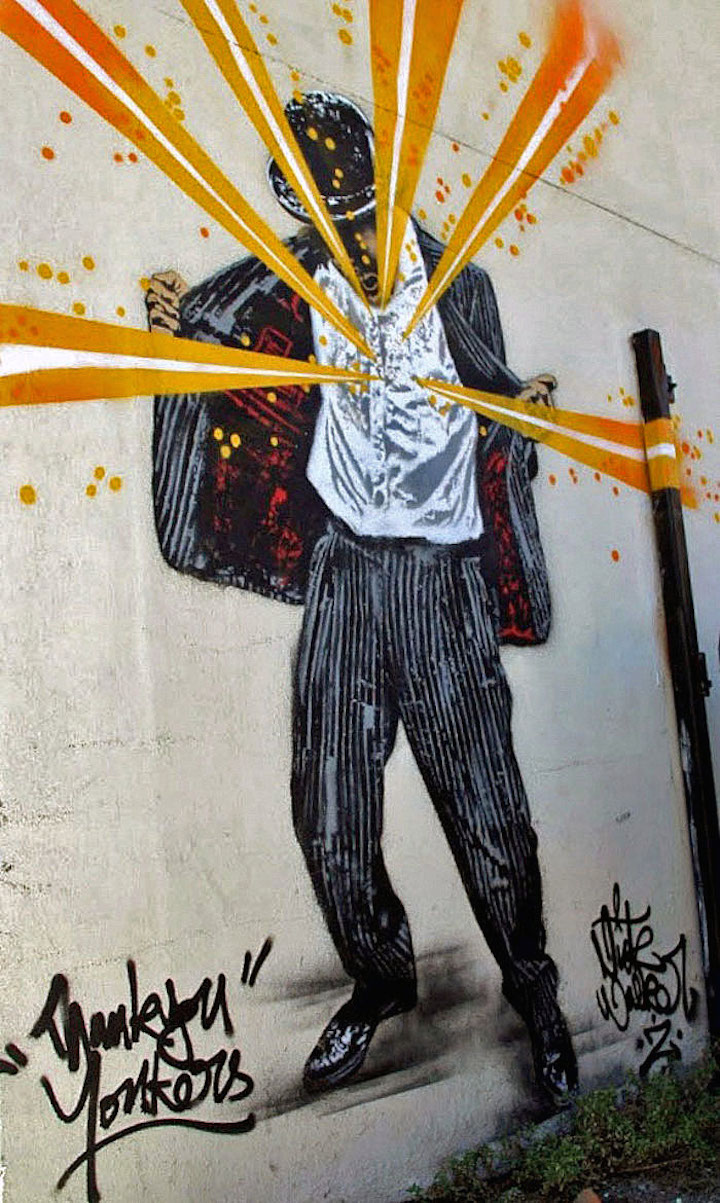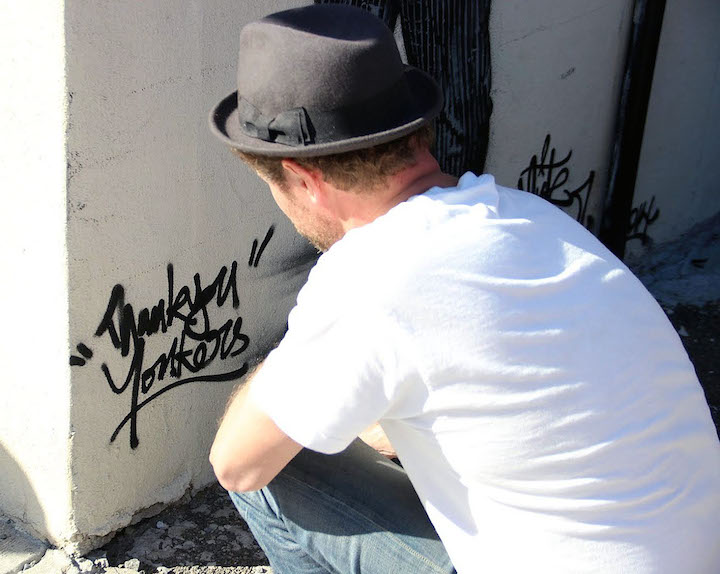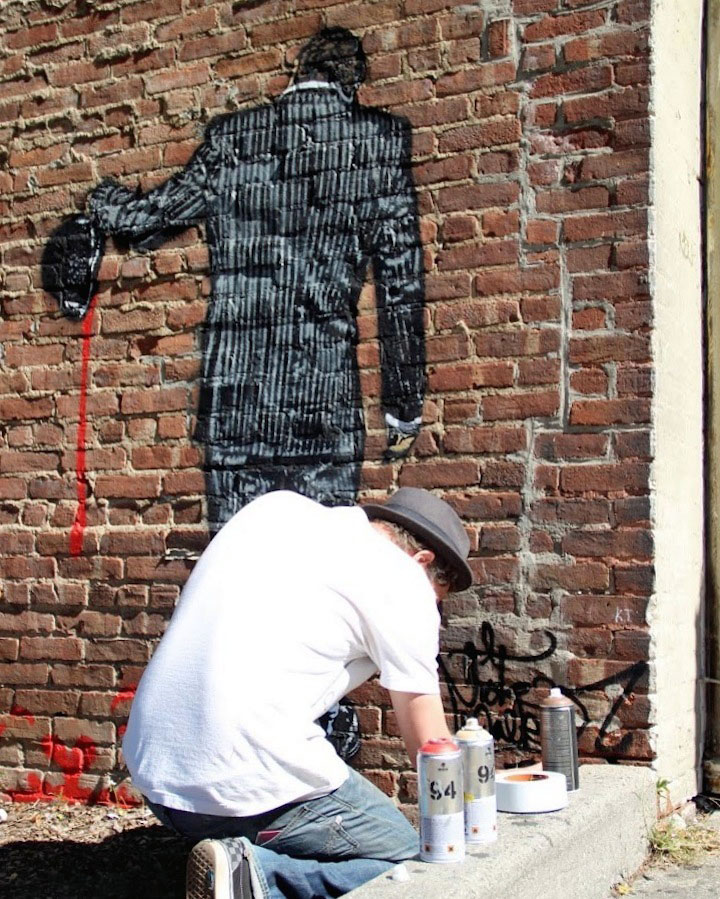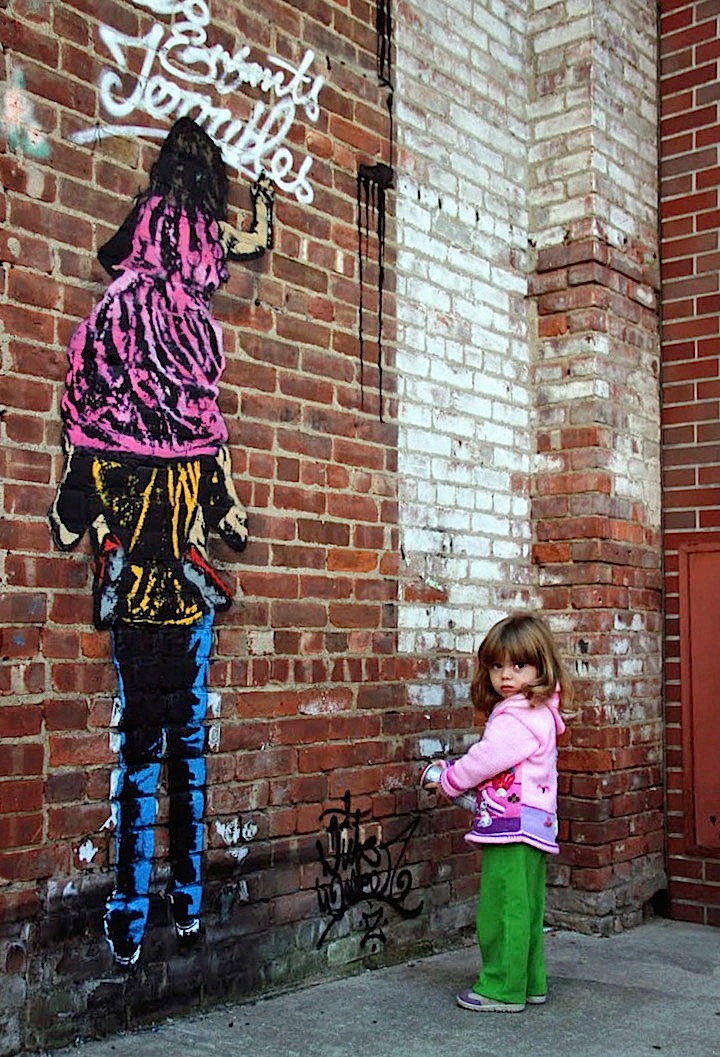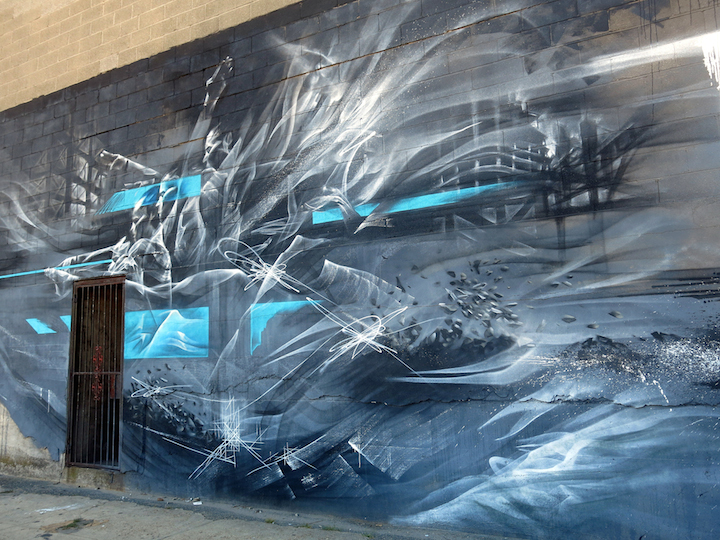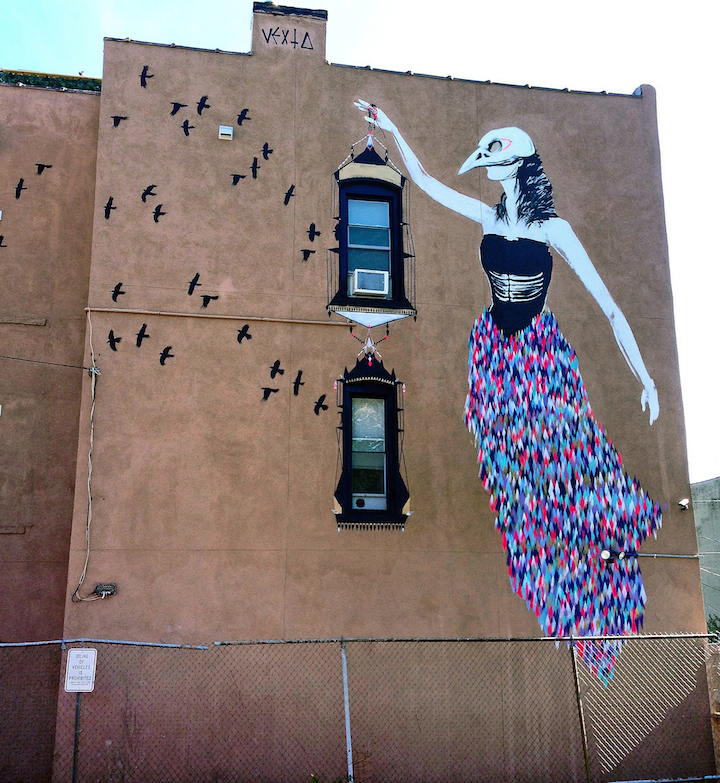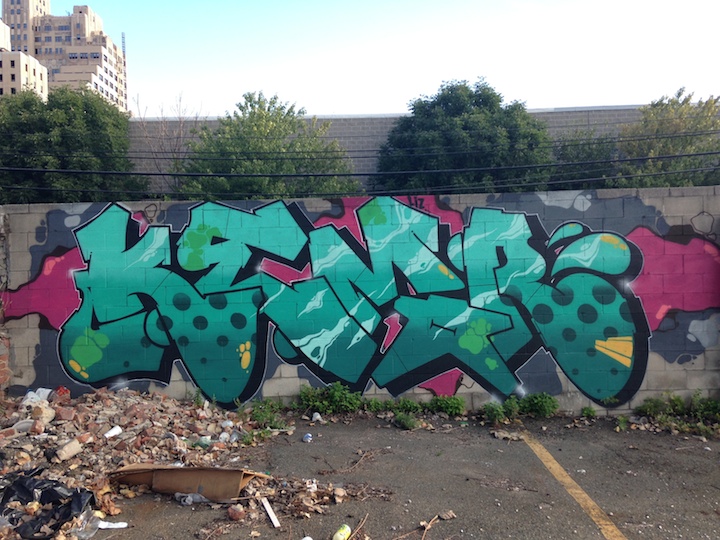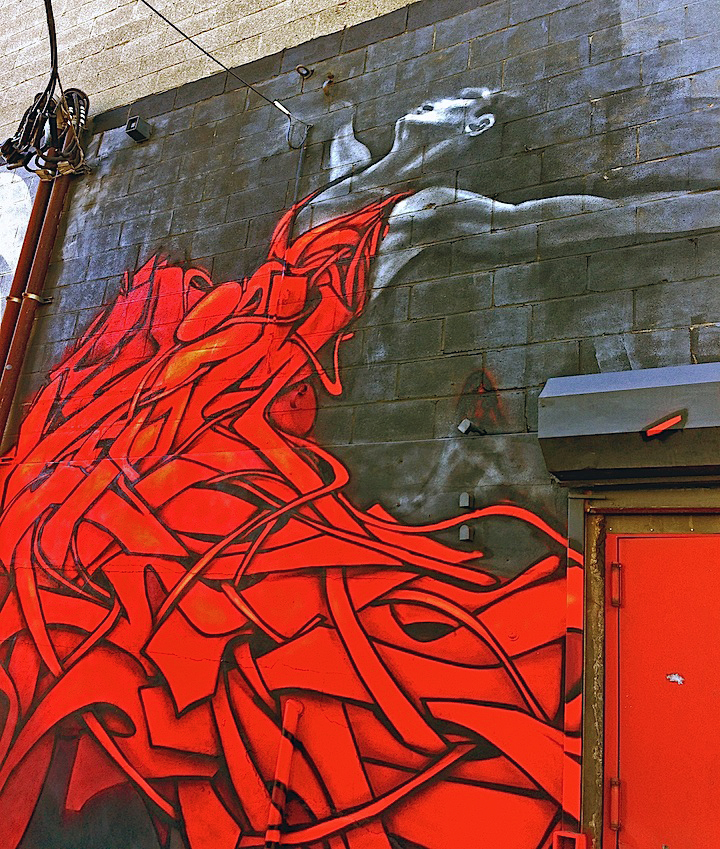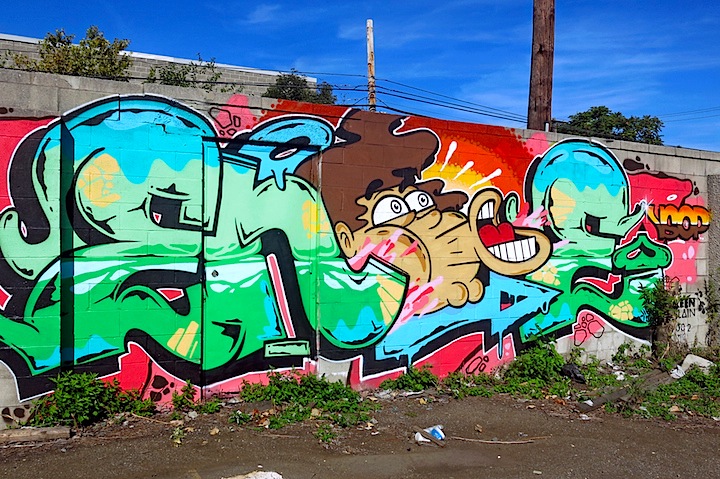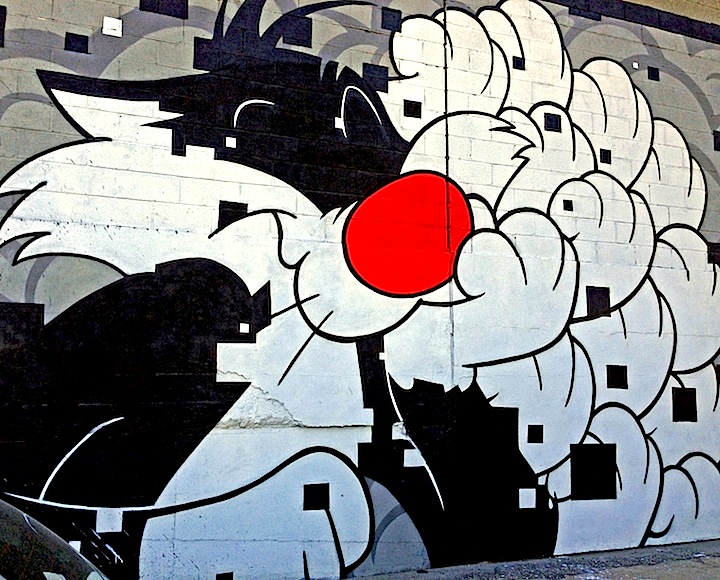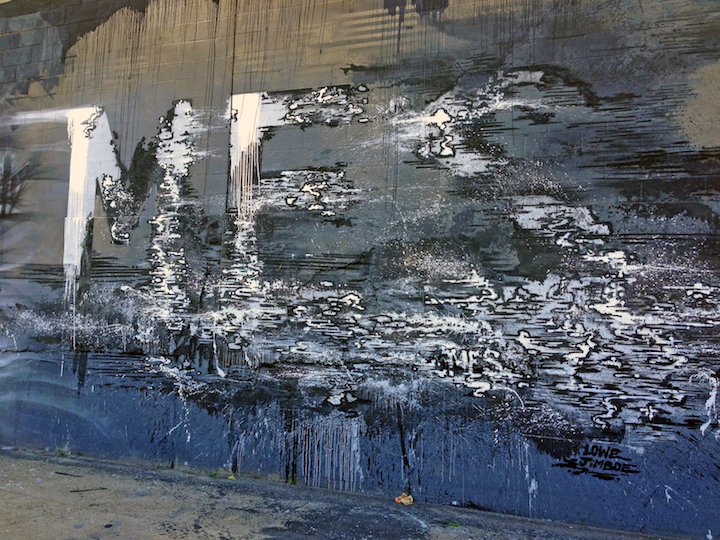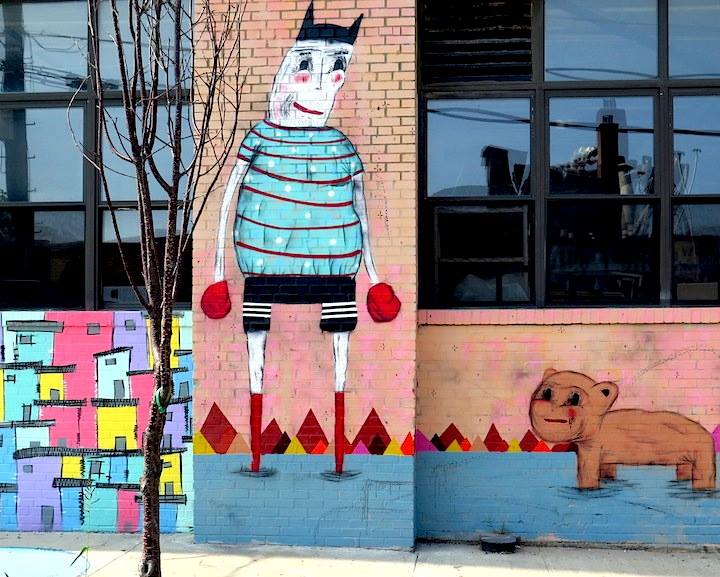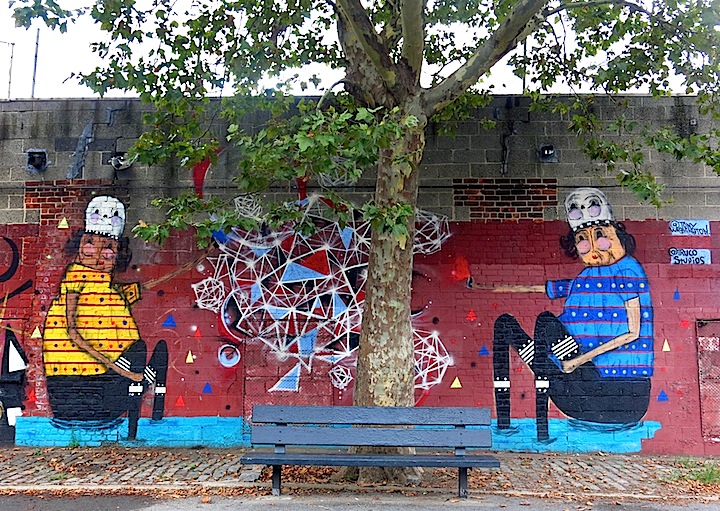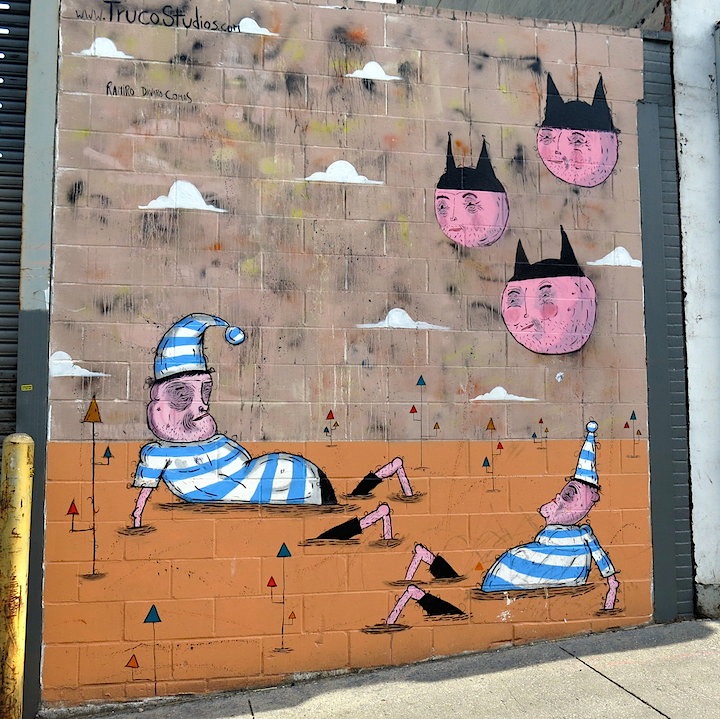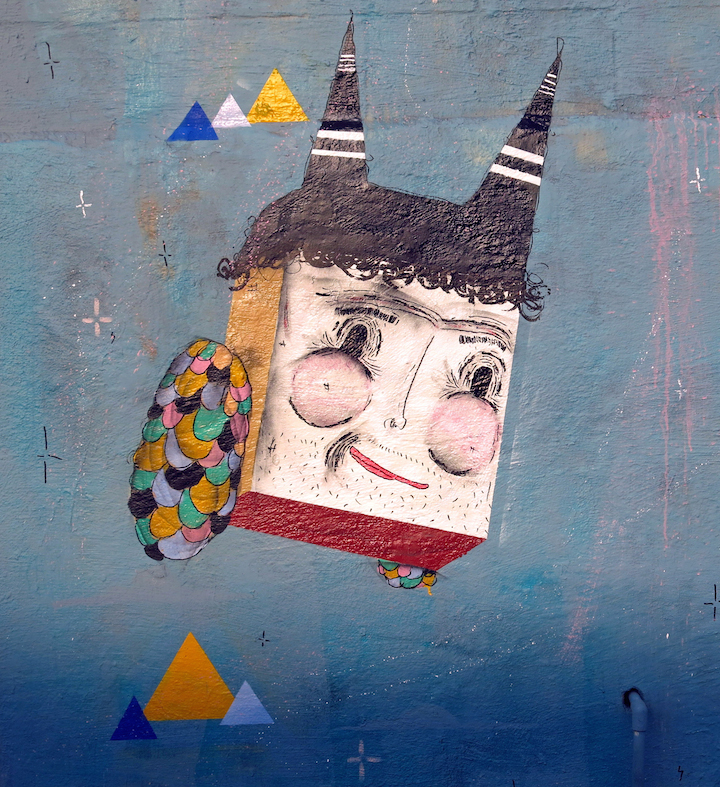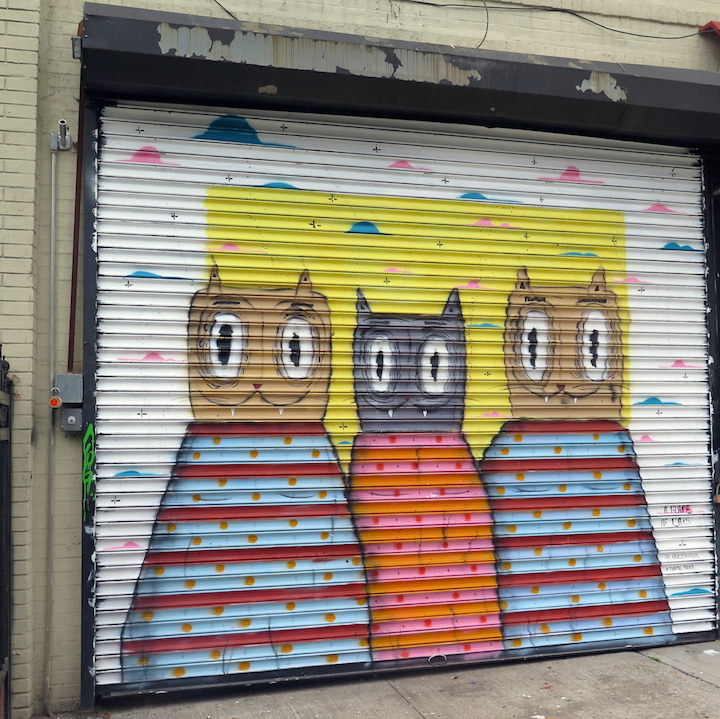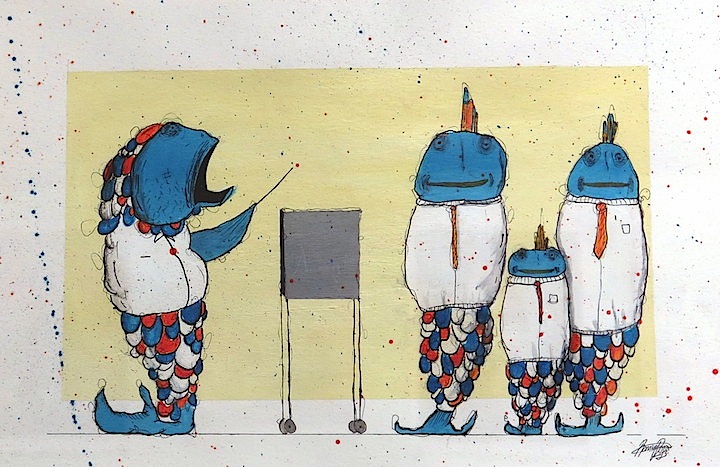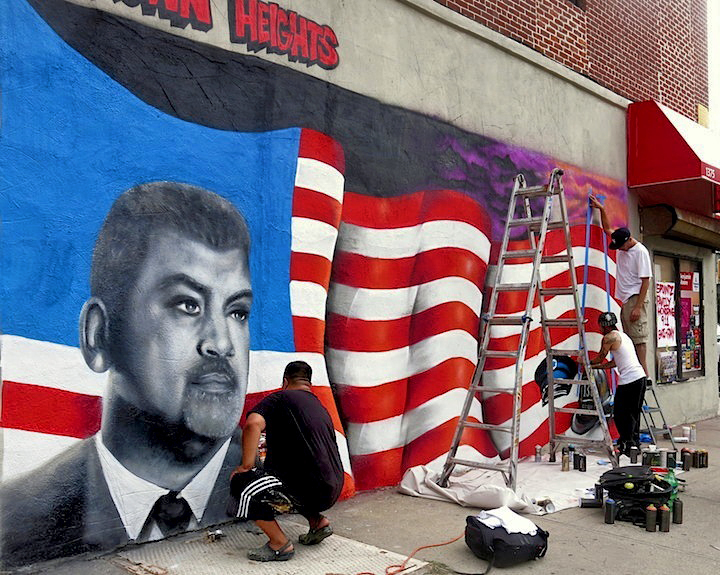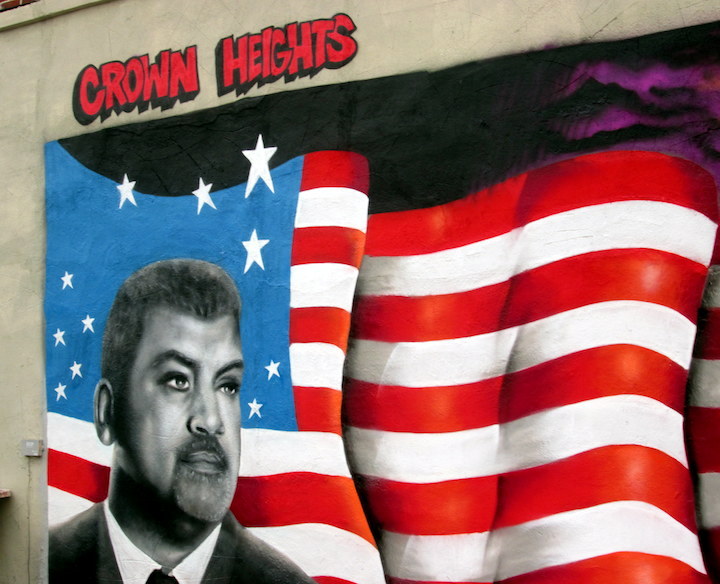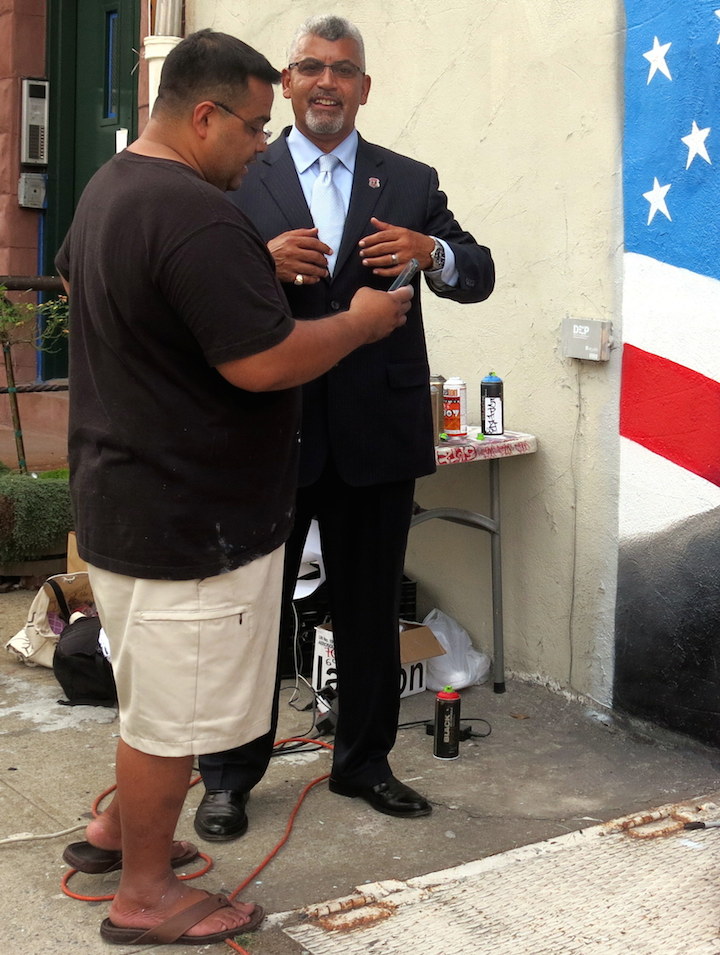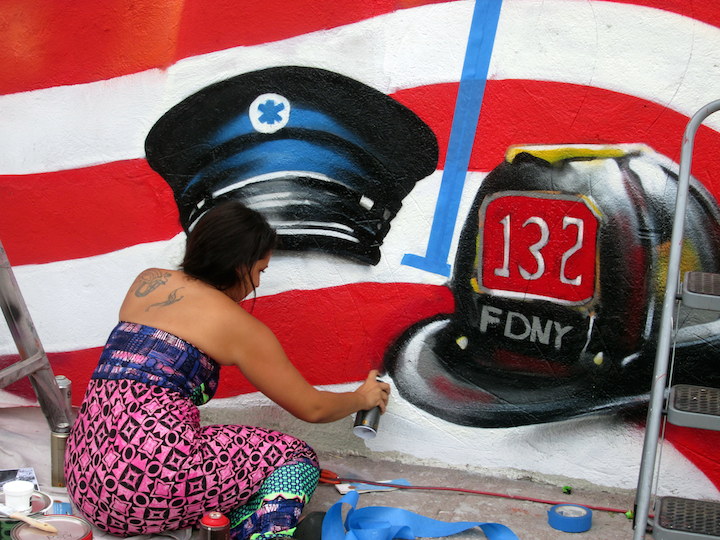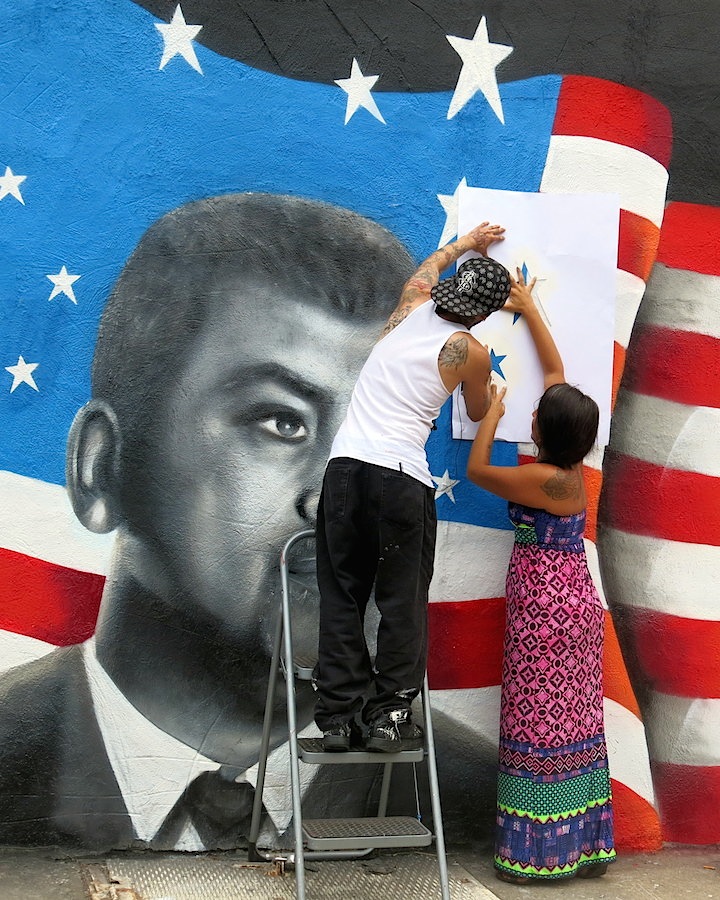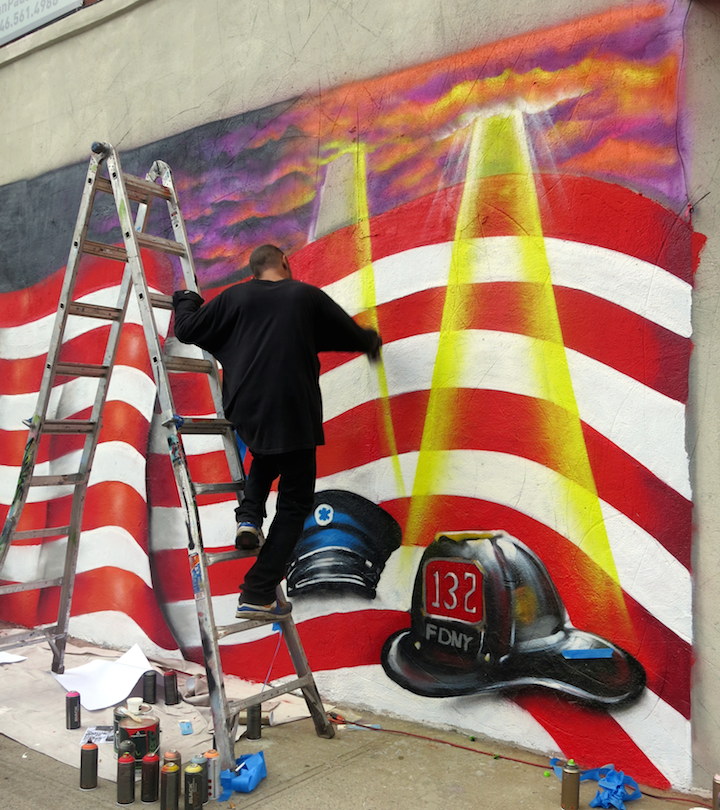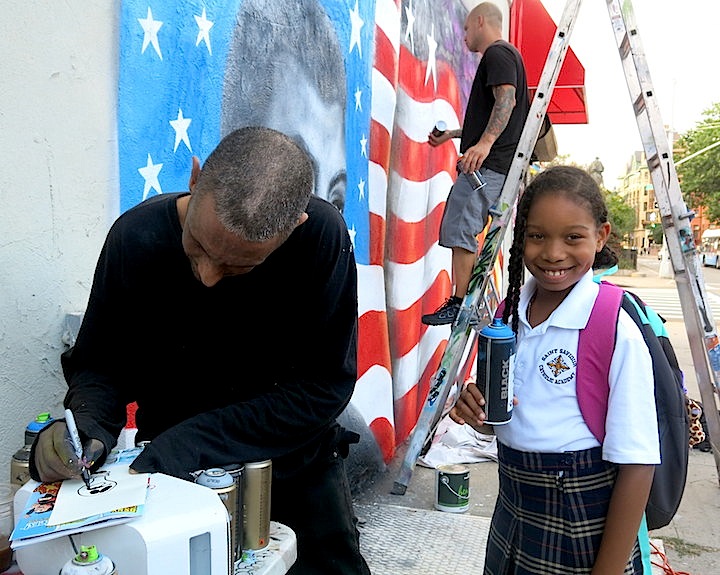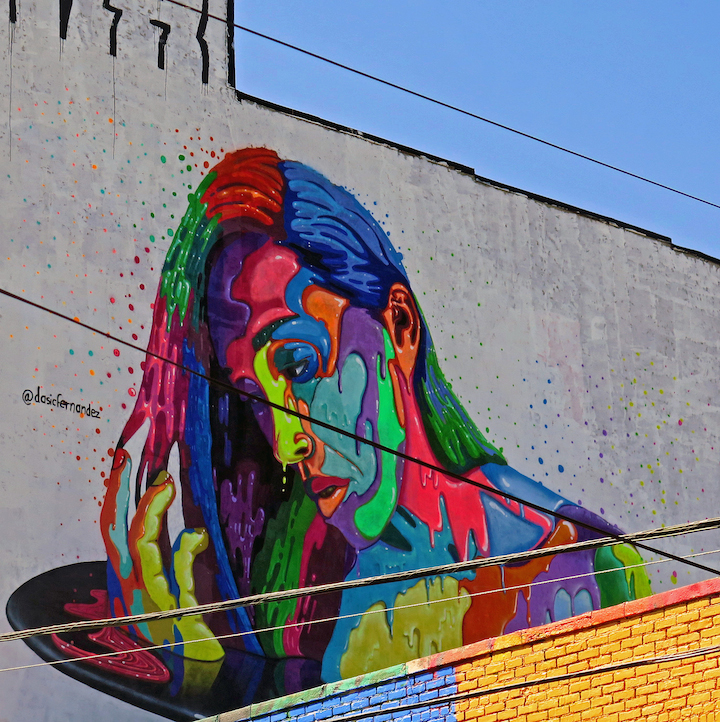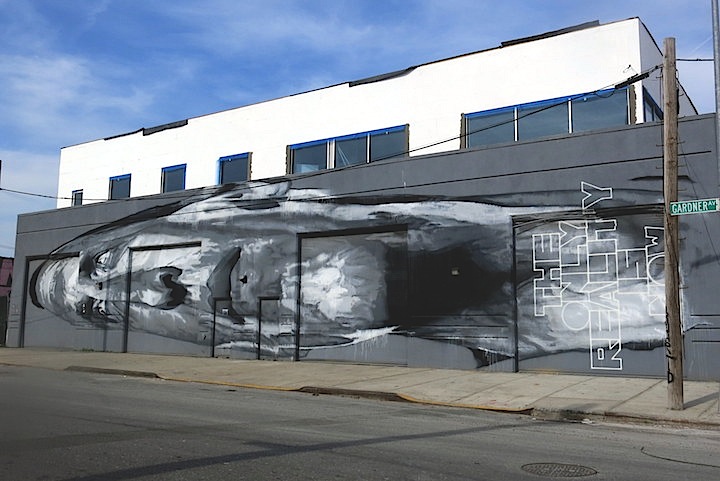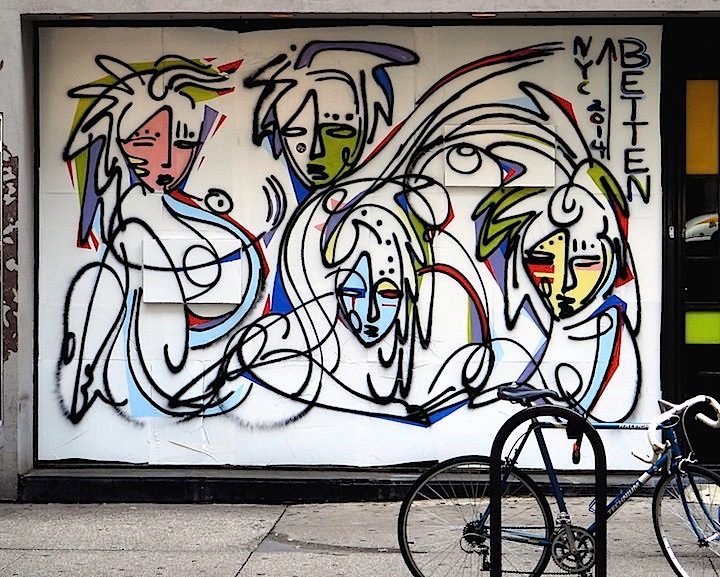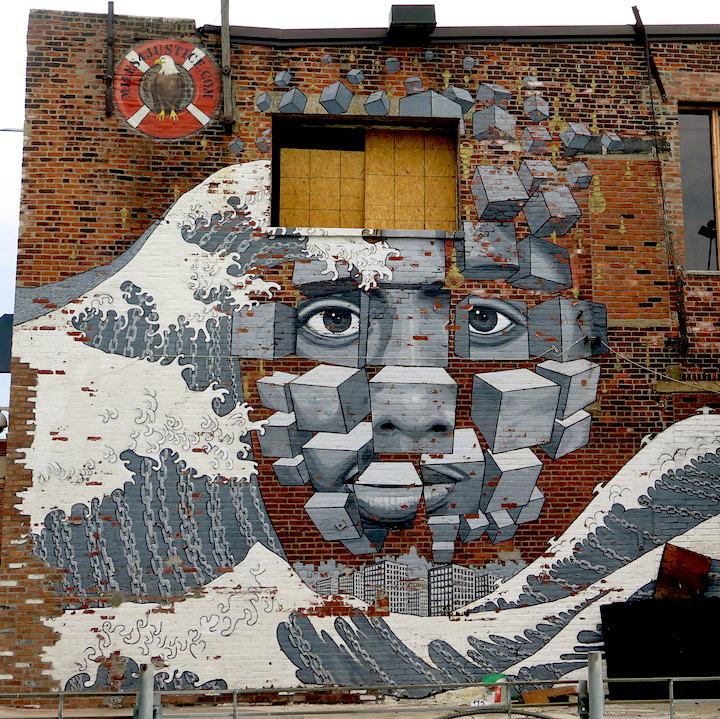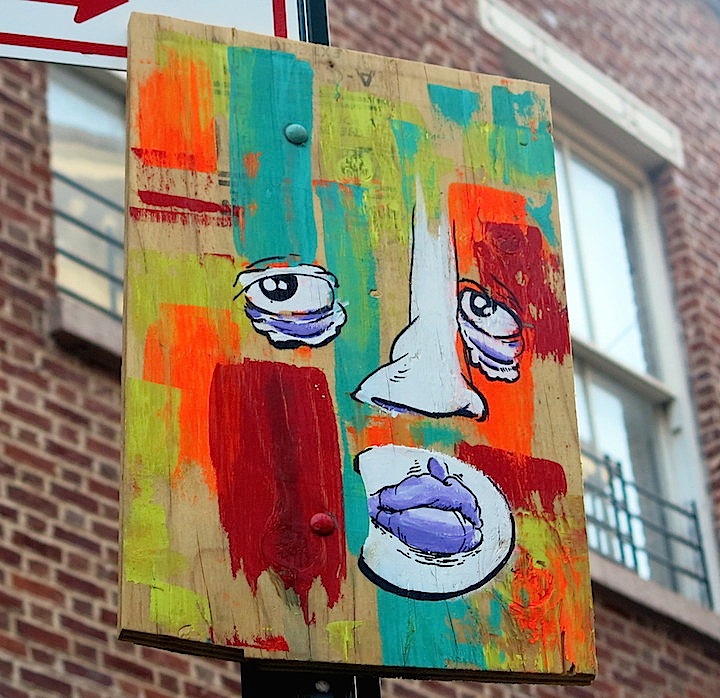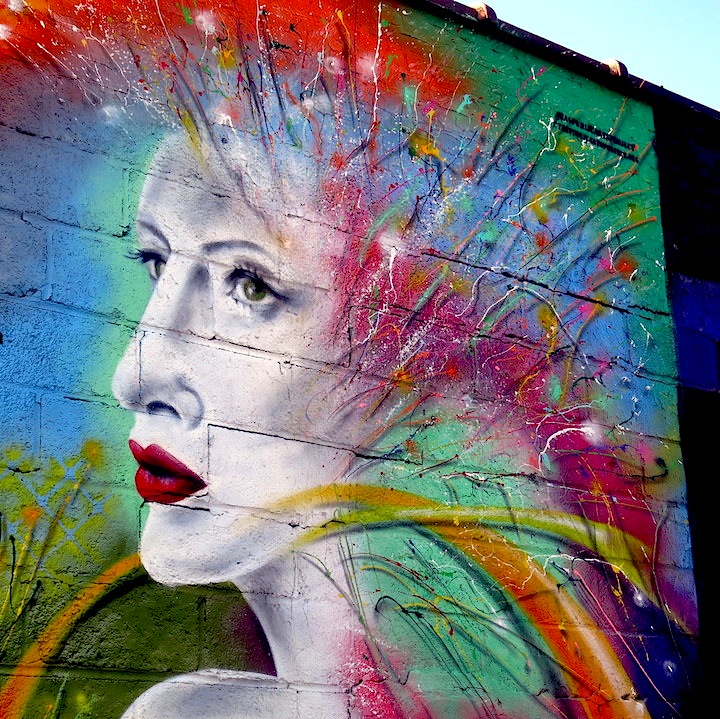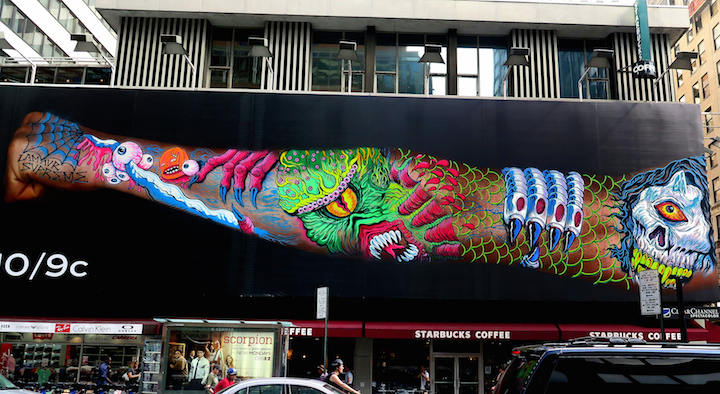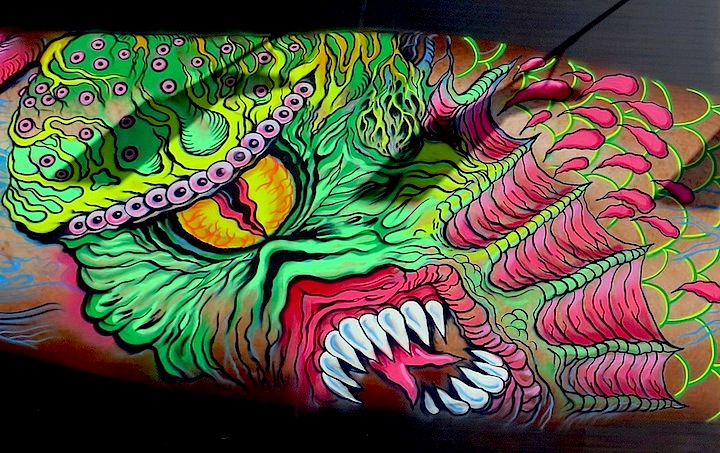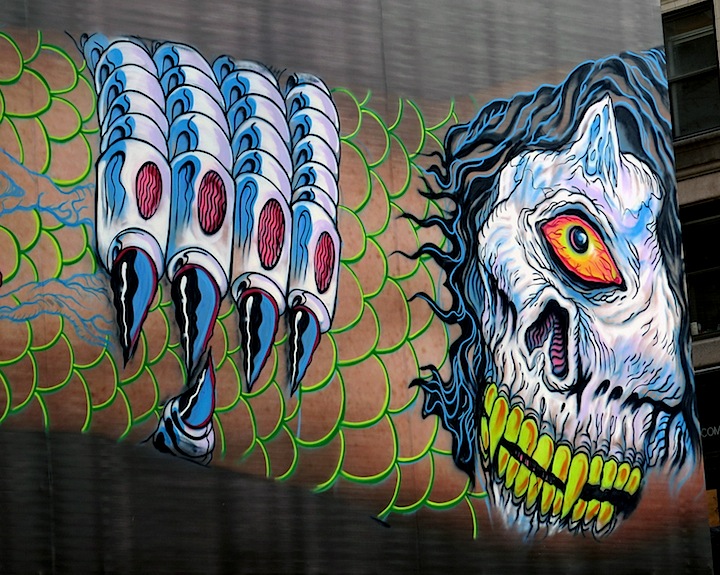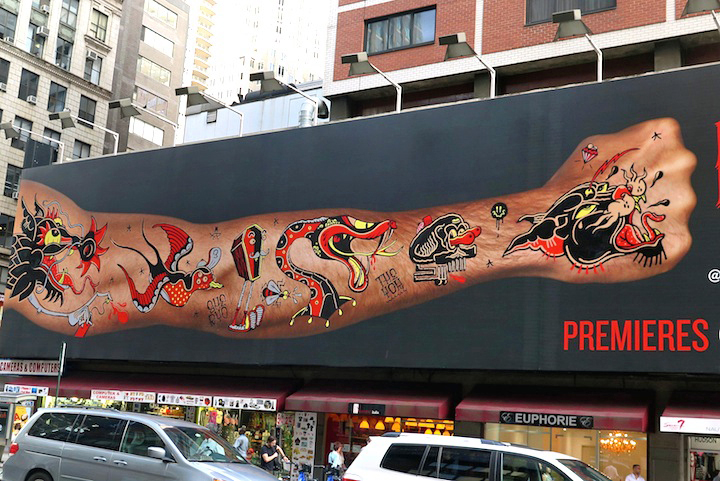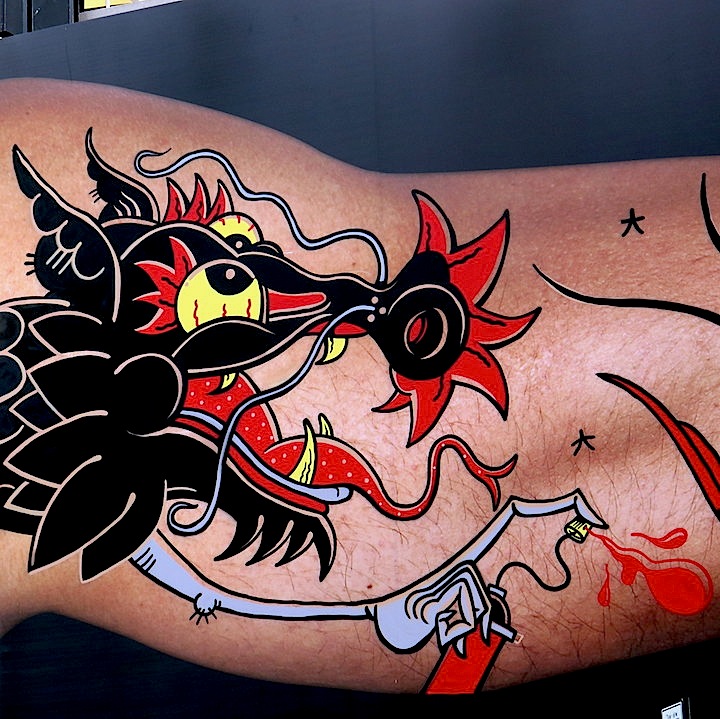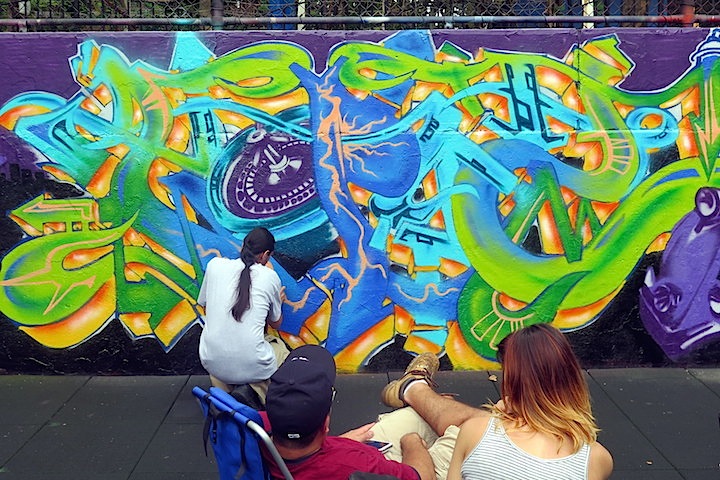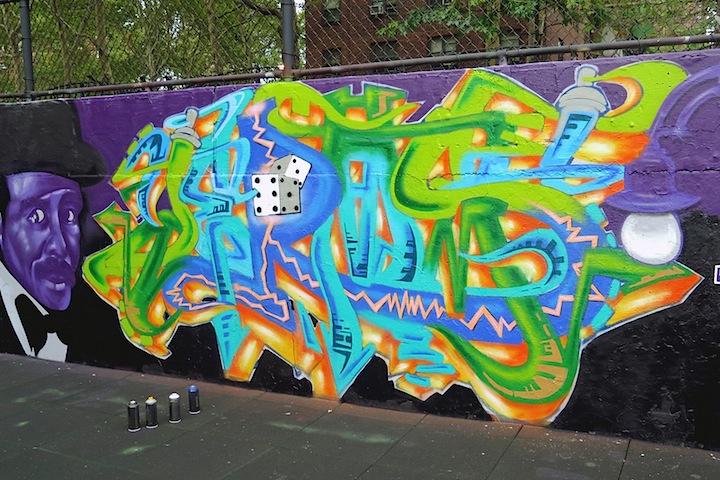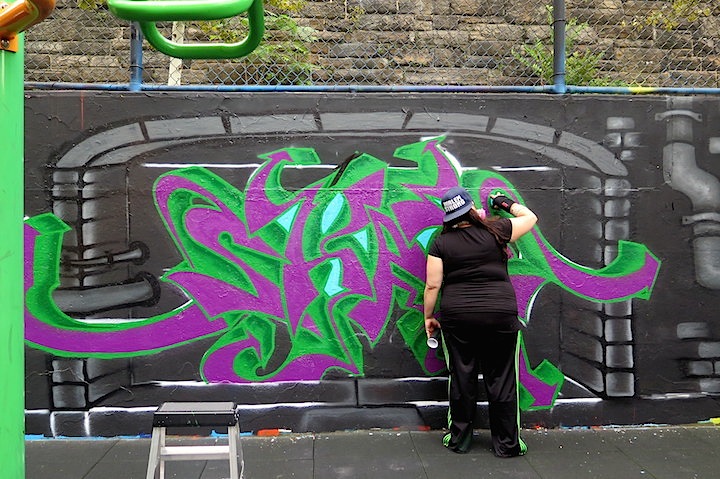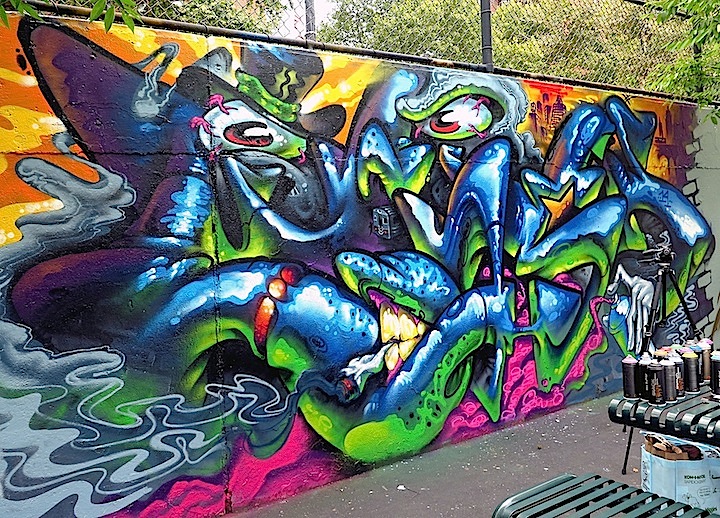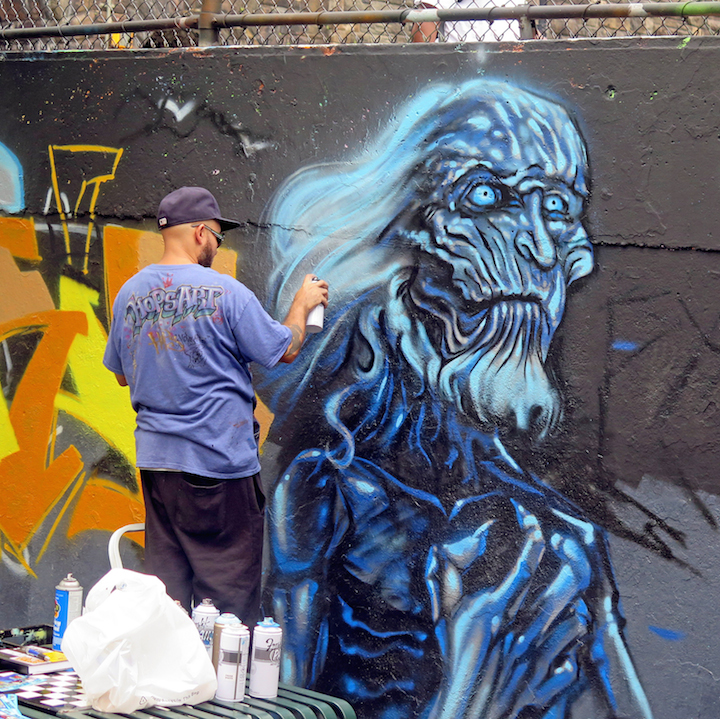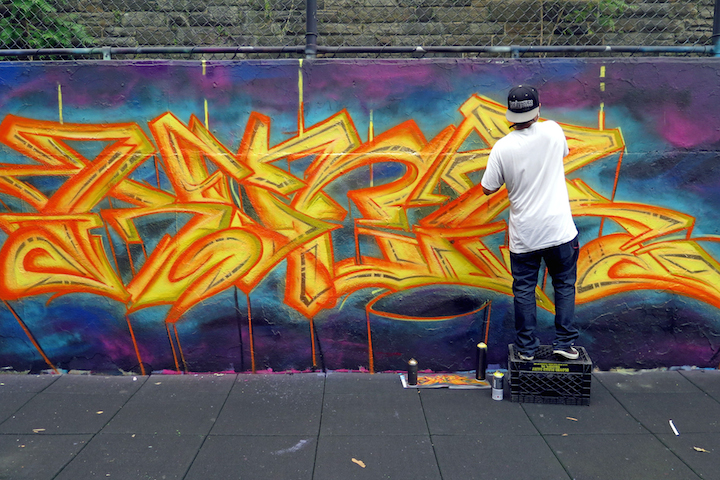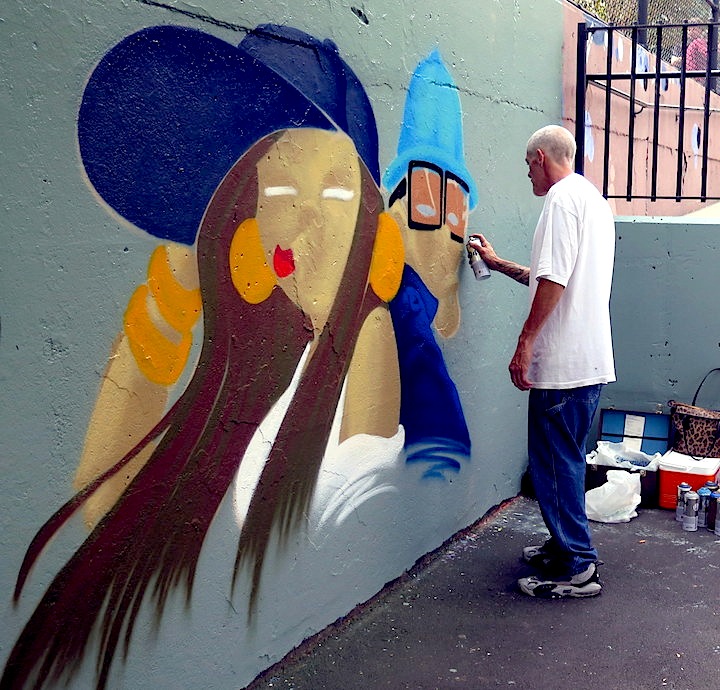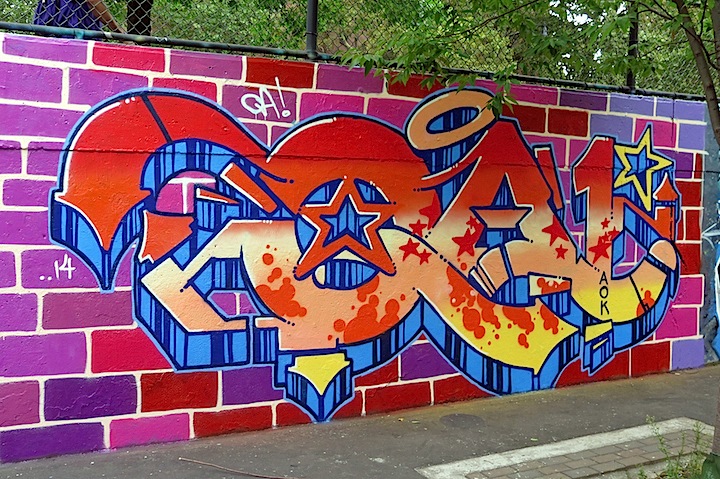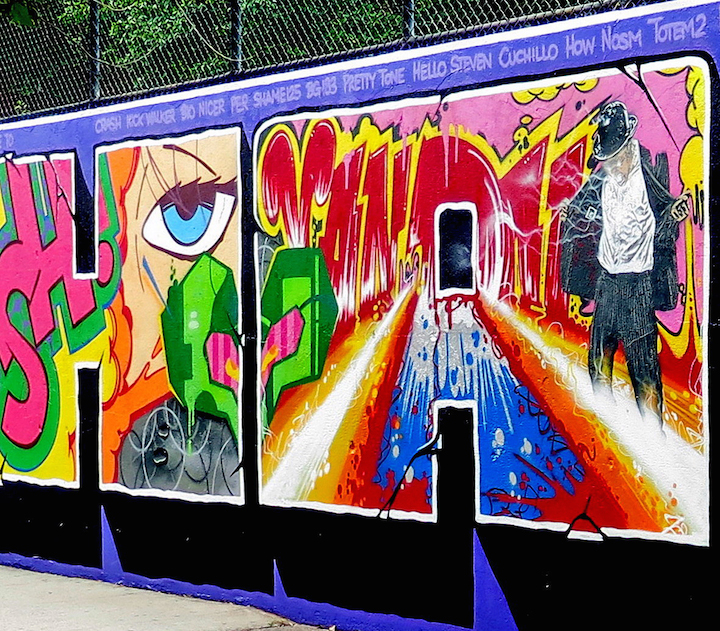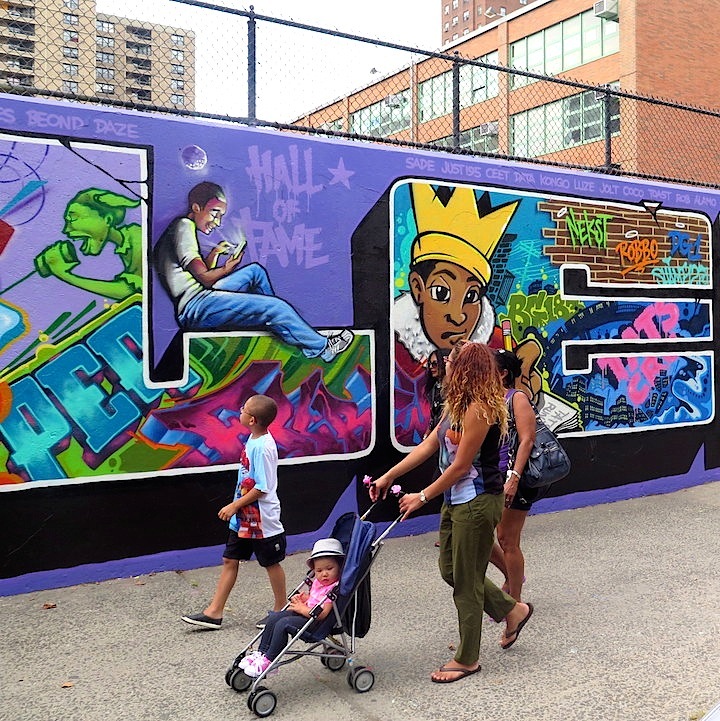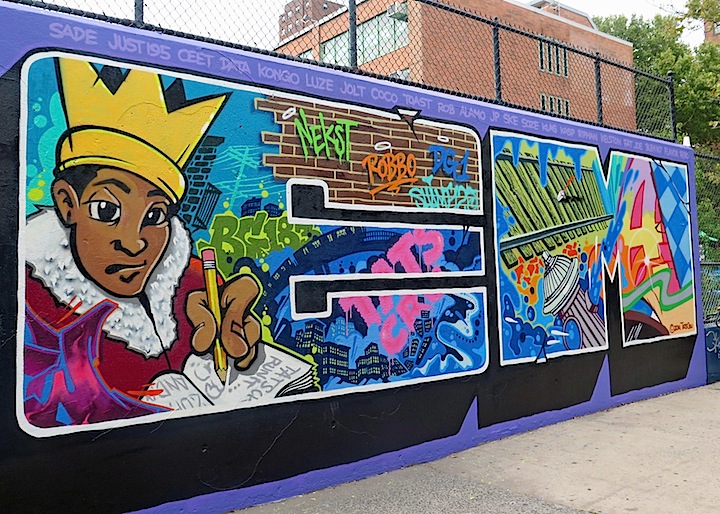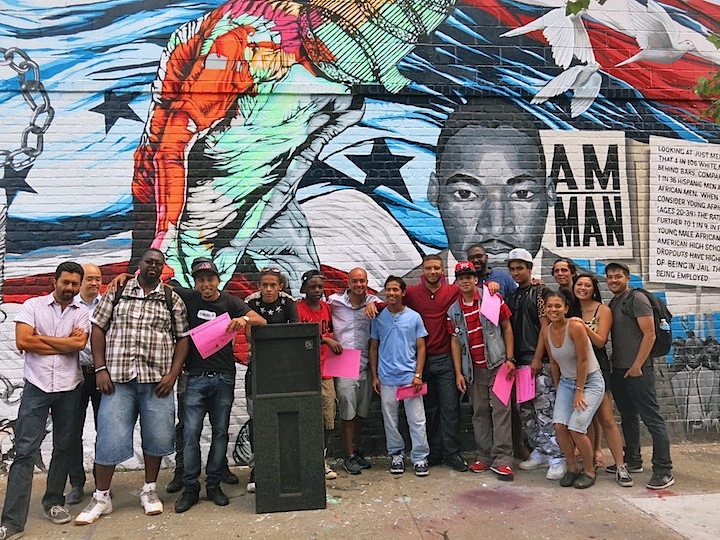
We were introduced to Esteban del Valle’s remarkable talents a number of years back at 5Pointz. We’ve since seen his deftly crafted artwork in Bushwick, the Lower East Side, Red Hook, Welling Court and recently at the 21st Precinct Art Exhibit. And in addition to forging his own artwork, Esteban has been sharing his skills and vision with youth this past summer in Brownsville, Brooklyn. Last week, the mural created by 17 young men in Groundswell’s Summer Leadership Institute, along with Esteban and his assistant artist, Jose de Jesus Rodriguez, was officially unveiled. Located at 417 Junius Street on the wall of the Food Bazaar Supermaket, it represents the best possible model for public art. At the mural’s dedication ceremony, I had the opportunity to find out from Esteban a bit more about this particular project, P. I. C. T. U. R. E. S Prison Industrial Complex: Tyranny Undermining Rights, Education and Society.
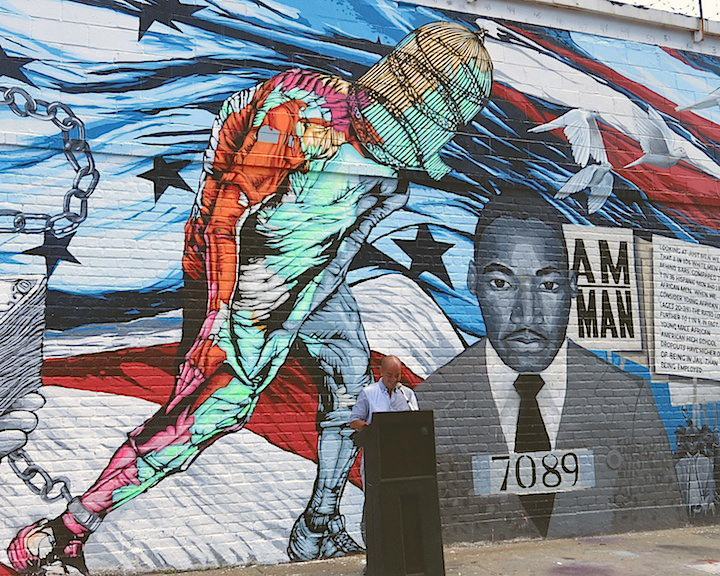
This mural is quite amazing. When did you begin working on it?
We began on July 2nd.
Can you tell us something about the process?
We spent the first two weeks researching the issue, discussing the justice system and designing our representation of it. The final four weeks were devoted to painting the mural.
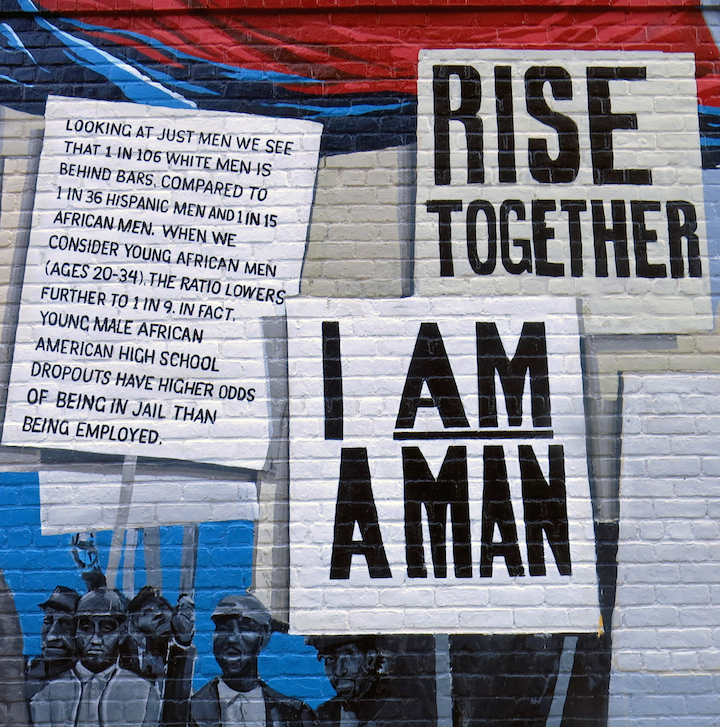
Why this topic?
It’s of particular relevance to this community. We see this mural as a way to raise awareness and provoke discussion about the subject of the prison industrial complex. Some of the youth involved in this all-male Making His’tory mural team have had first-hand experience with the way the justice system functions.
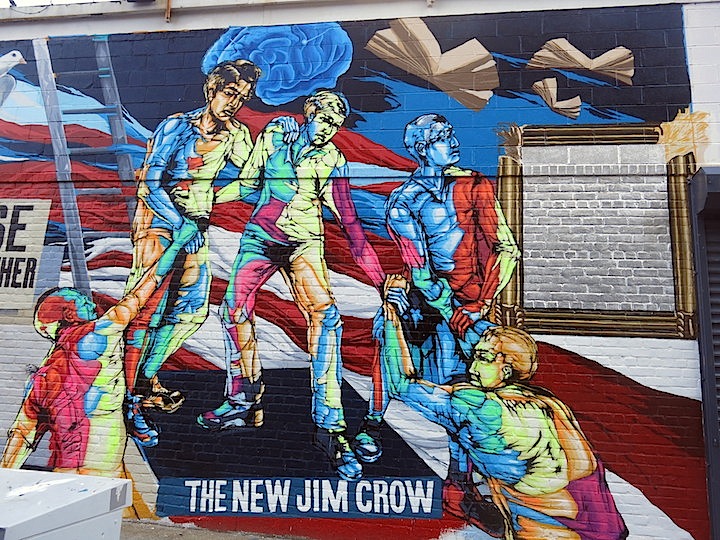
How have the young muralists responded to this project?
The response has been great. We’ve had many intense discussions and we can all walk away with a sense of accomplishment.
What has this experience been like for you, personally?
It was very exciting. And it was great for all of us to see an idea executed into a reality.
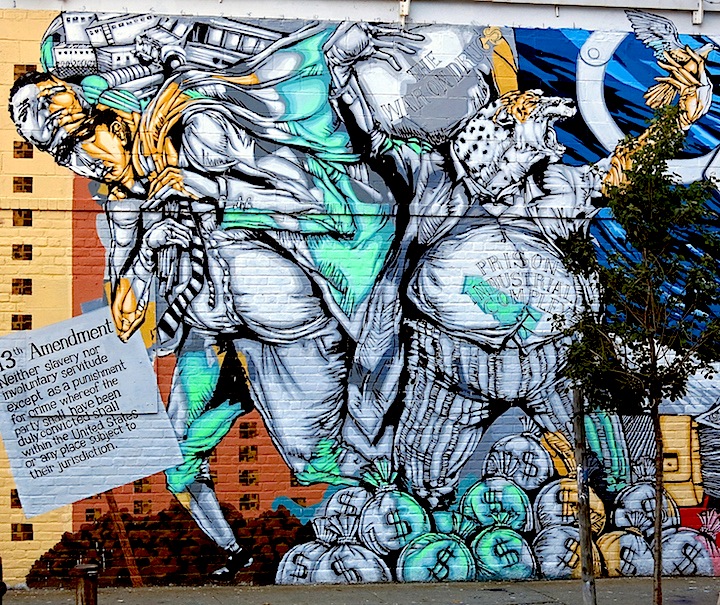
Have you any personal message?
With these tools (pen and paint brush in hand), you can change your life and your community.
Elijah Barrington, one of the project’s participants, added the following to our conversation: We sweated every day to get this wall to look the way we wanted it to. I felt focused and happy, and I learned so much. I’m already looking forward to the next project.
Brief interview and photos by Lois Stavsky
